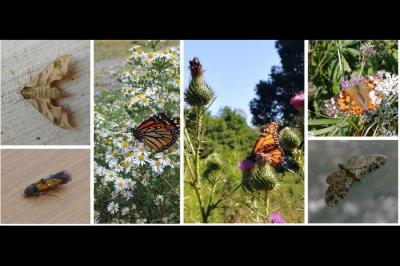Now that summer is here, some of the most beautiful, delicate insects are emerging and adding colour to our gardens.
Butterflies and moths are vital components of our natural environments – and some are hiding a mysterious secret.
A Royal Challenge: Monarch butterflies are some of the most well-travelled insects. Though it involves the birth and death of several generations, they actually migrate toward Mexico each winter.
However, populations of these determined butterflies been declining, because it has become increasingly difficult to migrate with changing weather patterns and extreme temperatures.
Monarchs are also threatened by the decrease in their food supply. The caterpillars only feed on milkweed plants, which are threatened by herbicide use.
Pretty Poison: The gentle coexistence between milkweed plants and monarch butterflies seems like such a simple interaction. However, monarchs actually rely on milkweed for protection via a fascinating chemical defence.
When the caterpillars eat milkweed, they ingest steroids called cardenolides, which are toxic to many predators. The butterflies become bitter-tasting and poisonous; blue jays even vomit after they eat monarchs.
Viceroy butterflies look very similar to monarchs, but have an extra black line on their hind wings. Viceroys also have an unpleasant taste, so birds have learned to avoid both of these bright orange-and-black species.
All Aflutter: Though we’re more likely to observe butterflies during the day, moth species actually outnumber them 9 to 1. Most active at dusk and at night, moths are also important pollinators and food sources for other animals.
Bats often eat adult moths, as do many small mammals, reptiles and amphibians. Moth caterpillars are also an important dietary component for baby birds.
Although some species, like the gypsy moth, threaten tree cover and agricultural products, moths and butterflies are essential little agents in ecosystem interactions.
Often, tidying up our gardens involves removing “weeds,” but many of these plants are actually ideal food sources for these winged friends.
Moths and butterflies lay eggs on a few specific host plants, where newly hatched caterpillars are near to their favourite foods. But once they change into their adult form, they enjoy sipping a variety of liquids.
This includes nectar from so-called nuisance plants like asters, thistles, nettles, goldenrod and forget-me-nots. Butterflies also love many herbs, including dill, rosemary and lavender.
The sheer diversity of these dainty fliers is apparent this time of year and many tools exist to record new sightings. With the iNaturalist app, Ontario Butterfly Atlas or eButterfly, you can determine the type of insect based on photographs and even help researchers collect data on rare species.
Whether being a citizen scientist or maintaining a pollinator-friendly garden, keeping butterflies and moths in mind will maintain vibrant, healthy ecosystems.
Kyra Simone is a NOTL-born nature lover with a master’s degree in biology. In her spare time, she advocates for sustainable change, picks up garbage, makes recycled jewelry, and transforms furniture bound for the landfill.











